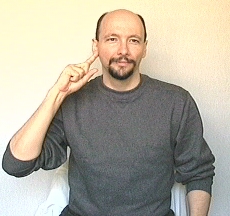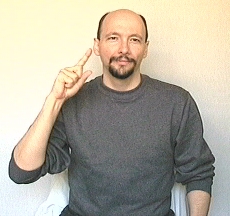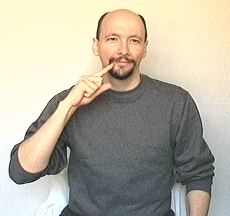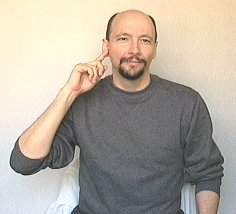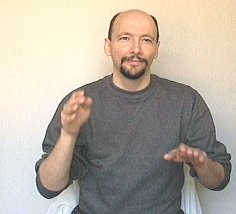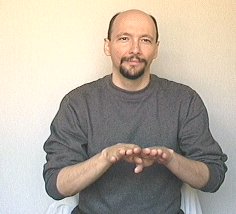American Sign Language: "Deaf"
DEAF:
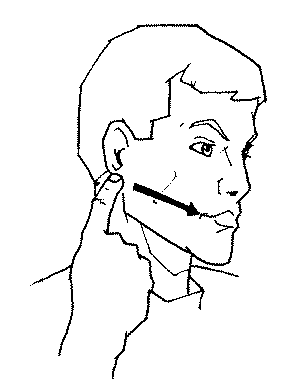
Handshape: index finger
Location: Starting location: In general it starts on the cheek near the ear but occasionally you will see it start near the mouth (on the cheek). Ending location: On the cheek near the mouth.
Orientation: If done with the right hand, the right palm can face either left or somewhat forward.
Movement: Small arc.
Variation: If you do this sign while puffing out the cheek, with a larger arc it means, "Deaf, and proud of it!"
Description: Touch your finger on your cheek near your ear, then move your finger in a small arch and touch it near the mouth. Remember, start and end the sign on the cheek. Do not do it on the ear or mouth, but rather near them.
DEAF:
Note: In this picture I'm touching the tip of my finger to my cheek. Another common method is to touch the side of the index finger to the cheek instead of using the tip of the finger.
Note: The typical sign DEAF moves an index finger from near the ear to near the mouth. You can also move it from near the mouth to near the ear. It is commonly done either way in the Deaf Community. But in general I do it from near the ear to near the mouth. If you actually touch the ear and/or place the finger "on" the mouth or lips it would be a "non-standard" way of signing Deaf. (Sort of like "over pronouncing" it. While that might be appropriate for some circumstances in which you intentionally wish to exaggerate this sign -- it would not be appropriate for everyday conversation to actually touch the ear or the lips with the finger. Instead you should just touch the cheek near the ear and the cheek near the mouth. In faster more skillful signing, the movement tends to be very short.
Variation: DEAF-(old version, not recommended)
Here is old way to sign Deaf. It combines the signs for EAR and CLOSED. This sign has been around for many years. I noticed some scuttlebutt a while back about this sign being out of favor in the Deaf Community because it portrays Deaf as being "disabled." Personally, I think the reason why the sign isn't being used much any more is because it takes more effort to do a two handed sign than a one handed sign.In any case, you still might see the sign used during "platform interpreting" (interpreting done on a stage or for a large audience) or done by an older person. You might also see it used during very formal speeches.
In the above example you point to or touch the ear and then move straight into the modified "closed" sign. (You do not point at the mouth.)
Also see: Animation: DEAF
Also see: "DEAFNESS"
Also see: "DEAFHOOD"
You can learn sign language online at American
Sign Language University ™
hosted by Lifeprint.com © Dr. William Vicars
